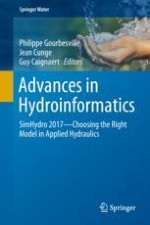2018 | OriginalPaper | Chapter
2D Surface Water Quality Model: A Forecasting Tool for Accidental Pollution in Urban River—Application to the Var River, France
Authors : Elodie Zavattero, Yunpeng Zhai, Meichun Qin, Mingxuan Du, Philippe Gourbesville, Olivier Delestre
Published in: Advances in Hydroinformatics
Publisher: Springer Singapore
Activate our intelligent search to find suitable subject content or patents.
Select sections of text to find matching patents with Artificial Intelligence. powered by
Select sections of text to find additional relevant content using AI-assisted search. powered by
